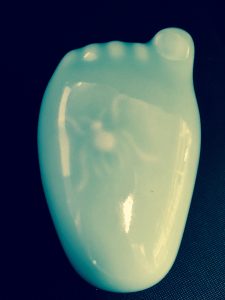Proper Protocol: A Gift Giving Guide
The phone rings in the Office of Protocol at The International Center. It’s a representative from one of our local university partners. The dean of the business school is traveling to Swaziland to establish a new partnership. As part of the visit, the delegation will meet with the Queen Mother, the spiritual and national head of this land-locked country in southeast Africa. The question is, “what is an appropriate gift to present to this important national leader?”
Before answering the question, we must first do our due diligence and answer the question “what not to give?” In many countries, including the United States, certain gifts have significant meaning and may not be appropriate in all circumstances. Take the example of the hostess gift for instance. If a dinner guest presents the woman of the house with a bouquet of flowers this would be a perfectly acceptable gesture in the U.S. However, if the bouquet consisted of a dozen red roses, although not offensive, the presentation could unintentionally create an awkward or embarrassing moment given the flowers’ romantic symbolism.
Other countries have similar rules for what’s not appropriate in gift giving and, often times, these traditions are steeped in superstition. Take Japan and China for instance: since the word for ‘four’ in both Japanese and Mandarin is a homonym for death, presenting a gift with quantities of four may turn a kind gesture into an unlucky omen.
Another factor to consider is how religious practices come into play. Products made from genuine leather may not be acceptable for a devout Hindu who respects cows as a sacred animal, nor would whiskey or wine be appropriate for a Muslim whose religion forbids the consumption of alcohol. Knowing what not to give is as important as knowing what to give.
What to get the person that has everything?
When a billionaire French businessman came to Indianapolis for the grand opening of a local operation, the question “what to get the person that has everything he could possibly want?” arose. The answer came with some creative thinking. Indianapolis is known for its racing and as luck would have it, a French racecar driver had just won an inaugural event at the famed race track. With a few calls to the right people we were able to secure an autographed checkered flag that read “Welcome to Indianapolis, a place where the French can win.” It sent a wonderful message, and the businessman was delighted with the presentation.
In the case of our partner’s trip to Africa, we did not discover any blatant taboos during our research, so the next logical step would be to turn to the gift log. What? You don’t have a gift log? Keeping a record of gifts at your organization is a great tool in relationship building. Not only does it provide a catalog of gift ideas for when you are meeting with new partners, but it also can prevent the embarrassing incident of presenting something that has already been gifted.
 The best gifts are the ones that are locally made, culturally relevant, and, most importantly, arrive in one piece. It is not always the case that we are able to find or afford the nicest hand crafted gifts when we are on a budget, but wherever possible, we should make every effort. Not only does it show thought and consideration—it really is the thought that counts—to the receiver, but it demonstrates pride and support for our local artisans. Our university partners needed not look further than the art school on campus to commission a one-of-a-kind piece that reflects the local flavor; perhaps a landscape that appeals to the Swazis’ appreciation for beautiful natural vistas; or the State Museum or Historical Society gift shop for something off the shelf.
The best gifts are the ones that are locally made, culturally relevant, and, most importantly, arrive in one piece. It is not always the case that we are able to find or afford the nicest hand crafted gifts when we are on a budget, but wherever possible, we should make every effort. Not only does it show thought and consideration—it really is the thought that counts—to the receiver, but it demonstrates pride and support for our local artisans. Our university partners needed not look further than the art school on campus to commission a one-of-a-kind piece that reflects the local flavor; perhaps a landscape that appeals to the Swazis’ appreciation for beautiful natural vistas; or the State Museum or Historical Society gift shop for something off the shelf.
“Non-acceptance would cause embarrassment to donor and U.S. Government”
The Protocol Gift Unit of the Office of the Chief of Protocol handles gifts received by the executive branch of government and selects gifts presented to foreign dignitaries. For a complete list of gifts check out the registry.
It is worth noting that, often, how a gift is presented is as important as what is presented. Choosing the appropriate colors of wrapping can give a gift an impression of good fortune. Although we want to ensure our gift is wrapped securely for travel, upon arrival the gift should be repackaged if necessary to allow ease of access should the receiver want to open it when the gift is presented.
 Leaving behind keychains, notebooks, pen sets, and other token gifts is a great opportunity to promote your organization’s brand, but when it comes time to for a gift exchange, a meaningful and symbolic presentation is the way to go.
Leaving behind keychains, notebooks, pen sets, and other token gifts is a great opportunity to promote your organization’s brand, but when it comes time to for a gift exchange, a meaningful and symbolic presentation is the way to go.
Tip: Is the perfect gift for your visitor too heavy or fragile for travel? Offer to ship it after it is presented.
Still in doubt? Ask. The next time you’re searching for the perfect gift, let The International Center, with expertise from its multinational staff and connections with foreign embassies and consulates from around the world, be your guide.
By: Peter Kirkwood, Protocol Officer, The International Center
Photo index:
Image one: Presented by the Consul General of China in Chicago on the occasion of a welcome reception the amulet means contentment.
Image two: Presented by university officials from Malaysia the Keris (dagger and sheath) is a Traditional Malay weapon, social symbol and talisman.
Image three: Collected over many years of hosting delegations from the Department of State’s International Visitor Leadership Program the keychains represent various symbols of the visitors’ countries.


